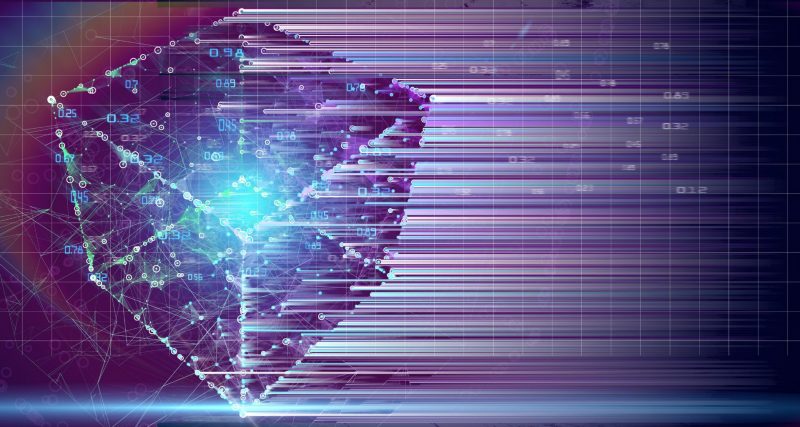In our rapidly digitalizing world, the security of information has grown to become a paramount concern. As the engines of our global economy and day-to-day life increasingly shift online, cryptography – the art of secure communication in the presence of adversaries – has never been more critical. Cryptography is the bedrock of data security, and the advent of quantum computing threatens to reshape this landscape. This article delves into the intersection of quantum computing and cryptography, examining the challenges and opportunities this synergy presents for securing data in the age of quantum computing.
Understanding Quantum Computing
To comprehend the interaction between quantum computing and cryptography, it’s vital to understand the basics of quantum computing. Traditional computing operates on the binary code – 0s and 1s, known as bits. Quantum computing, however, works on quantum bits or ‘qubits.’ Qubits hold the potential to be both 0 and 1 simultaneously thanks to a property called ‘superposition,’ enabling them to process an enormous amount of information at once.
Qubits can also be entangled, a peculiar phenomenon known as ‘quantum entanglement.’ This means the state of one qubit instantaneously affects the state of another, no matter the distance separating them. Through these two properties, quantum computers promise significant leaps in computational power, tackling problems currently beyond the reach of classical machines.
ADVERTISEMENT
Quantum Computing’s Impact on Cryptography
Modern cryptography, particularly public-key cryptography, is fundamentally based on mathematical problems that are tough for classical computers to solve. Prime factorization is a classic example, the difficulty of which forms the backbone of RSA (Rivest–Shamir–Adleman), a widely-used encryption algorithm. While classical computers struggle with such tasks, with their superior processing power, quantum computers could potentially solve them in a feasible timeframe, rendering many current cryptographic systems vulnerable.
For instance, Shor’s algorithm, a quantum algorithm devised by mathematician Peter Shor, can factor large numbers exponentially faster than any known algorithm running on classical computers. If large-scale, error-free quantum computers become a reality, they could run Shor’s algorithm effectively, breaking RSA and similar encryption methods. This looming threat to traditional cryptographic systems is often referred to as ‘quantum supremacy.’
Quantum-Safe Cryptography
The prospect of quantum supremacy has propelled the need for quantum-safe (or post-quantum) cryptography. Quantum-safe cryptography involves designing cryptographic algorithms thought to be secure against both classical and quantum computers. Many post-quantum cryptographic techniques focus on mathematical problems that remain hard even for quantum computers.
ADVERTISEMENT
For instance, lattice-based cryptography, a type of post-quantum cryptography, relies on the complexity of problems related to multidimensional lattices. As of now, there’s no known quantum algorithm that can solve these lattice problems efficiently, making them potentially quantum-resistant. However, the move towards quantum-safe cryptography isn’t straightforward. New cryptographic schemes must be thoroughly vetted for potential vulnerabilities before they can be widely adopted, a process that could take years or even decades.
Quantum Cryptography
Quantum cryptography takes a different approach to securing data. Instead of relying on the hardness of mathematical problems, it leverages the principles of quantum mechanics to secure data. The most renowned application of quantum cryptography is Quantum Key Distribution (QKD).
In QKD, two parties can share a secret key used for encrypting and decrypting messages. Thanks to the principles of quantum mechanics, if a third party tries to intercept the key during transmission, it will inevitably alter the key’s state, alerting the communicating parties to the presence of an eavesdropper. This inherent security feature makes QKD an attractive method for secure key exchange.
ADVERTISEMENT
Quantum Internet and Its Implications
The emergence of quantum computing and quantum cryptography carries implications beyond individual systems. The concept of a Quantum Internet, a network of quantum devices interconnected for exchanging quantum information, is rapidly gaining traction. The Quantum Internet would harness the principles of quantum mechanics, such as superposition and entanglement, to deliver unprecedented levels of security and computational prowess.
Such a network could enable QKD on a global scale, potentially revolutionizing industries reliant on secure communication. Quantum-secure communication channels could strengthen national defense infrastructure, secure financial transactions, and even transform the realm of secure remote access in our increasingly remote-working world. However, building a global Quantum Internet presents immense technological challenges, including maintaining quantum coherence over long distances and achieving reliable, high-speed quantum data transfer.
Addressing Quantum Threats: Current Initiatives and Progress
Recognizing the looming quantum threat to our current security infrastructure, governments, academic institutions, and corporations worldwide are proactively seeking solutions. In the US, the National Institute of Standards and Technology (NIST) launched a project in 2016 to develop and standardize quantum-resistant cryptographic algorithms. This Post-Quantum Cryptography Standardization project is in its final stages, with a new set of cryptographic standards expected in the coming years.
Meanwhile, quantum cryptography and QKD are evolving from theory to practice. Several companies are offering commercial QKD systems, and there are ongoing trials for QKD networks. China has notably made strides in this space, launching the world’s first quantum satellite, Micius, in 2016. Micius successfully demonstrated QKD over unprecedented distances, proving the feasibility of satellite-based QKD.
The Transition: Challenges and Considerations
Moving to quantum-safe systems is a significant task, filled with challenges. The first is the sheer scale of replacing or upgrading cryptographic systems worldwide. Many of our critical systems, from the Internet to banking to national defense, depend on cryptography. Transitioning these systems will require a concerted global effort, significant resources, and a careful balance to maintain service continuity.
Another challenge is the time factor. Cryptographers estimate that we have about a decade before quantum computers can break current cryptographic systems. Given the time it takes to develop, standardize, and implement new cryptographic systems, this doesn’t leave much room for delay.
Finally, while quantum-safe algorithms may be resistant to quantum threats, they also need to be efficient. Many proposed quantum-safe algorithms require larger key sizes or more computational resources than current systems. Balancing security with practicality will be a crucial part of the transition process.
Conclusion
The intersection of quantum computing and cryptography presents a compelling paradox: quantum computing threatens to break current cryptographic systems, yet quantum mechanics might also hold the key to uncrackable security. As we enter this new era of quantum computing, the race is on to develop quantum-safe cryptographic systems and leverage quantum cryptography’s potential. While this journey will undoubtedly pose challenges, it’s also an exciting opportunity to reshape our data security landscape and build a more secure digital future. Our exploration into the quantum realm promises to redefine our understanding of computation and information security in profound ways, holding untold potential for advancements that we are just beginning to imagine.








